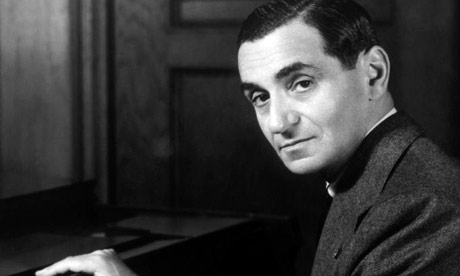
Judged by their facades alone, the block of 19th-century houses on West 28th Street just off Broadway in Manhattan would have little to detain the passerby. They are painted a sickly shade of green, and front an array of bucket shops selling hastily-printed Obama T-shirts, cheap jewellery and imitation perfumes.
But to initiates in the history of early 20th-century American music, they are a temple of musical largesse to be revered and protected. It was in this row of four-storey buildings, with its classic New York iron fire escapes and elaborate plaster work, that the modern popular music industry was created.
The nickname by which the block came to be known - Tin Pan Alley - in time came to represent the entire music industry. But now the block is threatened, having been put up for sale by its owners for $44m (£26m) with the probable intention of knocking it down for replacement by an office block.
Tenants living in the apartments, as well as music lovers and architectural conservationists are all trying to fend off the sale.
They are pressing for permanent landmark status for the buildings.
"That these buildings, where the sheet music business began, still exist is wonderful. We don't need another faceless office tower when we could preserve something as historic as this," said Simeon Bankoff of the New York preservation body, the Historic Districts Council.
The historic links of the block date back to 1893 when the music publisher M Witmark & Sons moved here, attracting other firms to follow. On their coattails in turn came songwriters, performers, agents and managers and before long the place was buzzing with energy and sound.
David Freeland, who has written an upcoming book on the city's disappearing cultural spots, Automats, Taxi Dances and Vaudeville, said the street was "filled with the cacophony of upright pianos being hammered day and night by song writers demonstrating their latest creations, looking for the next hit. It was a place of noise, activity and competition".
The cacophony is probably what gave rise to the name, in unflattering allusion to the noise of clashing pans.
Between the l890s and 1930s, some of the great names in American music set up shop here in what must rank among the highest density of creative brain-power per square foot in any place or time. George and Ira Gershwin and Irving Berlin had offices, as did jazz and blues greats Scott Joplin, Cole Porter and Fats Waller.
Out of the cramped premises, some of the best known songs also emerged. They include Take me out to the Ball Game, the tune sung with almost religious fervour at baseball games; Happy Days are Here Again, which Franklin Roosevelt adopted as his 1932 campaign song, and Berlin's unofficial anthem, God Bless America.
By its peak, this short strip of real estate had become to music what
the Model T Ford factory was to car production. "It was here popular
music grew up into a mass force, and was marketed just like any other
factory product," Freeland said.
The fate of Tin Pan Alley now partly hangs on what happens to the wider US economy. The financial crash may have bought it some respite, as potential buyers are likely to have been discouraged from a quick purchase.
Shop owners in the block are resigned whatever happens. No 49, where Witmark & Sons first pitched camp, is now a flower wholesalers.
"There's nothing we can do about it. In New York they'd knock down every building if they could make money out of it," said Paul, one of the flower sellers.
In No 53 they are counting on being round a little while yet. The shop sells party trinkets, and has stocked the front window with plastic hats celebrating New Year and the advent of 2009.

